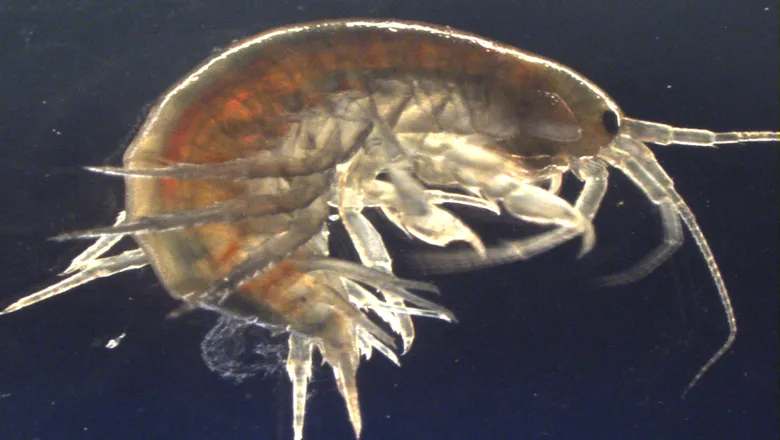01 May 2019
New study finds river wildlife contain cocaine, pharmaceuticals and pesticides
For the first time, researchers at King’s, in collaboration with the University of Suffolk, have found a diverse array of chemicals, including illicit drugs and pesticides in UK river wildlife.

The study published today in Environment International, looked at the exposure of wildlife, such as the freshwater shrimp Gammarus pulex, to different micropollutants (chemicals found at exceptionally low levels) and the levels of these compounds in the animals.
Consumer products, medicines and drugs can end up in rivers after use and comprise thousands of different chemicals which have the potential to cause environmental harm. The team collected samples from five catchment areas, and 15 different sites across the county of Suffolk. Surprisingly, cocaine was found in all samples tested, and other illicit drugs such as ketamine, pesticides and pharmaceuticals were also widespread in the shrimp that were collected.
Lead author, Dr Thomas Miller from King’s said: “Although concentrations were low, we were able to identify compounds that might be of concern to the environment and crucially, which might pose a risk to wildlife.
“As part of our ongoing work, we found that the most frequently detected compounds were illicit drugs, including cocaine and ketamine and a banned pesticide, fenuron. Although for many of these, the potential for any effect is likely to be low.”
Professor Nic Bury from the University of Suffolk said: “Whether the presence of cocaine in aquatic animals is an issue for Suffolk, or more widespread an occurrence in the UK and abroad, awaits further research. Environmental health has attracted much attention from the public due to challenges associated with climate change and microplastic pollution. However, the impact of ‘invisible’ chemical pollution (such as drugs) on wildlife health needs more focus in the UK as policy can often be informed by studies such as these.”
Dr Leon Barron from King’s added: “Such regular occurrence of illicit drugs in wildlife was surprising. We might expect to see these in urban areas such as London, but not in smaller and more rural catchments. The presence of pesticides which have long been banned in the UK also poses a particular challenge as the sources of these remain unclear.”
The full paper is available online.
